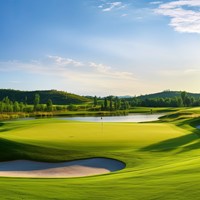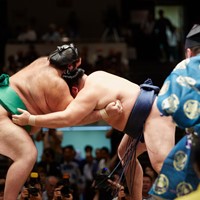What is Kyudo? An Easy Guide to Japanese Archery History and Basics

Kyudo is a traditional Japanese martial art focused on discipline, spirituality, and self-improvement through archery.
This article explores the rich history, cultural significance, and unique practices of Kyudo, introducing its philosophy, techniques, and how it differs from Western-style archery. Whether you are curious about Japanese culture or interested in the meditative aspects of this ancient art, this guide will provide a clear and insightful overview of Kyudo.
The Basics of Kyudo
Kyudo, literally meaning “the way of the bow,” is a traditional Japanese martial art that emphasizes not only archery but also the development of the mind and spirit. It is not merely about hitting a target—Kyudo is a disciplined practice of self-reflection, mental composure, and respect. The ultimate goal lies in the process: drawing the bow with serenity, aiming with clarity, and releasing the arrow with a calm mind.
History and Cultural Background
The origins of Kyudo trace back to ancient Japan, when bows were used for hunting and warfare. During the Warring States period, archery evolved into a refined martial technique practiced by the samurai class. However, as firearms replaced bows on the battlefield, archery gradually transformed into a form of spiritual and moral cultivation.
In the Edo period, Kyudo became increasingly formalized as a “Budo” (the way of martial arts), focusing less on combat and more on discipline, etiquette, and inner development. Even today, through ceremonial archery events at shrines and dedicated practice in dojos, Kyudo continues to preserve Japan’s cultural heritage and spiritual traditions.
Key Characteristics of Kyudo

The Shape of the Bow
The bow used in Kyudo is called a “yumi” and is notable for its asymmetrical shape. Measuring about two meters in length, the grip is located below the center, making the upper limb longer than the lower. This design allows the archer to shoot while standing, kneeling, or on horseback, without the bow touching the ground.
The Eight Stages of Shooting (Shaho-Hassetsu)
Kyudo practice follows a structured sequence known as “Shaho-Hassetsu” (The Eight Stages of Shooting). These include fundamental steps such as ashibumi (stance), dozukuri (posture), yugamae (preparing the bow), and hanare (release). Each movement is performed with precision and mindfulness, reflecting harmony between body and spirit.
The Spiritual Element
Kyudo places great importance on a calm, focused mind—what is often described as mushin (no mind). Practitioners seek to eliminate distraction, fear, or ego during shooting. Success is not solely defined by hitting the target, but by whether the archer maintained inner balance and proper form throughout the process.
Etiquette and Respect
Proper conduct is essential in Kyudo. From entering the dojo to handling the bow and arrows, practitioners observe formal rituals and show respect to others. These actions are not just tradition—they are expressions of humility, self-discipline, and awareness of one’s surroundings.
How Is Kyudo Different from Archery?

While both Kyudo and Western-style archery involve shooting arrows at a target, they differ greatly in purpose, equipment, and approach.
Purpose
Kyudo is not primarily a competitive sport but a form of self-cultivation. It focuses on spiritual development, posture, breathing, and etiquette. In contrast, archery—especially Olympic archery—is a sport centered on precision, scoring, and competition.
Bow and Equipment
Kyudo uses a traditional Japanese longbow made from bamboo or modern composites like fiberglass. The bow is asymmetrical, and no mechanical aids are attached. In archery, the recurve or compound bow is used, often with stabilizers, sights, and other enhancements to aid precision.
Arrow Material and Target Distance
Traditionally, Kyudo arrows were made of bamboo, but modern versions also use aluminum or carbon. The target in Kyudo is typically placed about 28 meters away, and hitting it is less important than how one performs each stage.
Archery arrows are scientifically designed for speed and stability, and the Olympic standard distance is 70 meters. Scoring is based on how close the arrow lands to the center of the target.
Emphasis on Process
Archery emphasizes quick decision-making, speed, and accuracy. Kyudo, on the other hand, values quiet, measured movements and complete mental presence. The release of the arrow (hanare) is not a moment of exertion, but one of liberation—an outcome of total readiness, posture, and intent.
What Kyudo Offers
Kyudo is not only a way to learn archery—it is a path to inner discipline. By practicing Kyudo, one can develop focus, patience, and composure. The deep breathing and meditative aspect of each shot help cultivate mental clarity, emotional balance, and respect for self and others.
Moreover, by engaging with the etiquette and aesthetics of Kyudo, practitioners gain insight into traditional Japanese values and culture.
Experience Kyudo Yourself
Many dojos across Japan offer trial sessions and beginner classes. Some are open to non-Japanese residents and visitors, and may provide guidance in English. Whether you are interested in Japanese culture or looking for a way to reconnect with yourself, Kyudo offers a rare and meaningful experience.
Conclusion
Kyudo is not simply about hitting a target—it is a way of life that unites physical form, mental discipline, and spiritual awareness. Its calm, deliberate practice reflects the elegance and depth of Japanese tradition and continues to inspire people worldwide.
If you are even a little curious, consider stepping into a dojo and discovering the quiet power of Kyudo for yourself.
Books about Kyudo
If you would like to read and learn about Kyudo, here are some books in English.


















